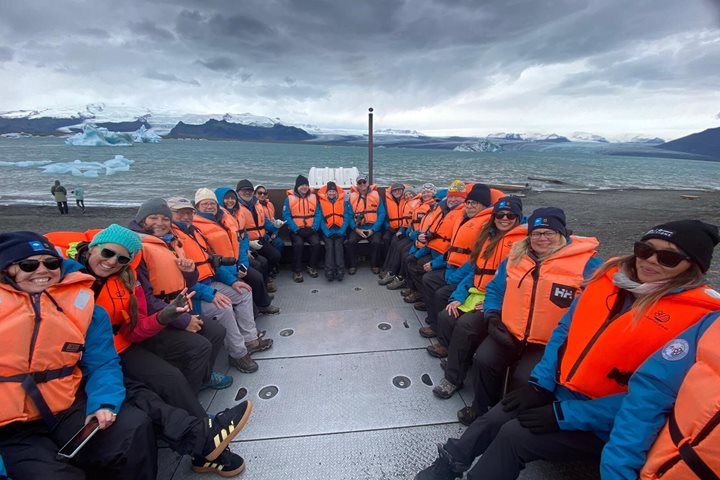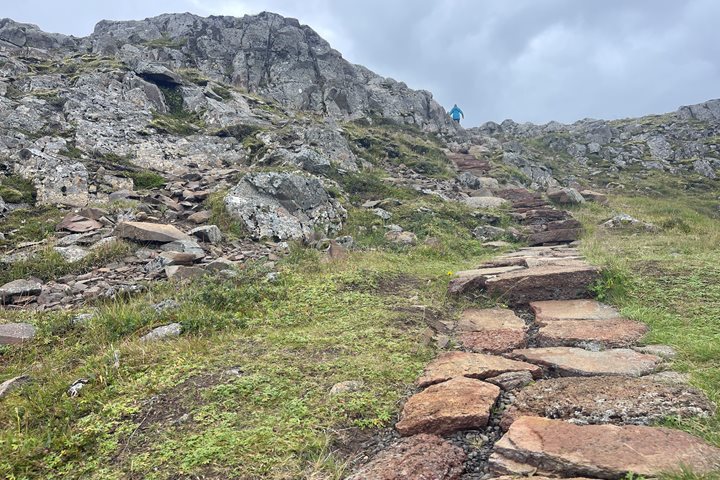National Geographic Explorer was at anchor in the North arm of Arnarfjöƌur and the majestic sight of Dynjandi Falls was just off our bow. This spectacular waterfall, meaning “thunderous” spills from the basalt cliff in a wide swath of frothing meltwater necking down with each successive plunge over the basalt terraces left by the volcanic activity that formed this island making it arguably one of the most beautiful in all of Iceland. This morning we set out to hike up the trail alongside this marvel obtaining stunning views as each tier was reached, seven in total. To remind us that we were in the wilds and not some movie set, small companions in the form of midges swarmed around our heads, not biting but merely making their presence known. Our expedition team offered kayaking as an option to explore this remarkable setting to take advantage of the calm conditions and mild temperatures. Kayakers also were afforded the opportunity to get a closer look at the falls on foot, either before or after their paddle.
Our afternoon was spent sailing to the next destination, which we would visit after dinner. In route we were afforded time to have a couple of presentations; one from our resident geologist, Grace Winer on the processes that created Iceland, and the last by our Global Perspective guest speaker, Don Walsh, on his historic submersible dive to the bottom of the Atlantic Ocean.
Our Recap and dinner were scheduled a bit early to accommodate our after dinner landing at Vigur Island in Isafjöƌur. This small island has been occupied for over 1000 years and has been in the care of the same family for seven generations. The family welcomes visitors in the summer season to get a taste of how they make their livelihood in a traditional and sustainable manner. There are tens of thousands of nesting seabirds here, mostly common eiders, puffins, and arctic terns. The family has been practicing the harvest of eider down from the thousands of nesting birds and with its incredible insulation properties this material can sell for as much as $3000/kg. Here they collect on the order of 50kg each season, which is no simple task as separating out the finest of the down is tedious work.
The evening could not have been more pleasant as we strolled over the gentle terrain ogling at Atlantic puffins bringing food back to their hungry chicks, thousands of arctic terns glided about calling and dive bombing us at times protecting their nests and eider ducks with their ducklings strolled along the beach and rested peacefully. Being led by members of the family that call this place home and hearing tales of life on Vigur Island, past and present, all the while the life of the island played out before our eyes. A lovely reception of coffee and cakes as well as a demonstration on how the eider down is sorted concluded our most pleasant visit to this very special place.







